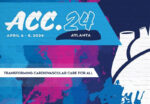Fundamentals: Previous studies have shown the benefits of a transradial approach in the context of coronary syndromes with ST-segment elevation. The aim of this study was to evaluate these benefits in AMI patients with ST-segment elevation within a window of up to 12 hours from the onset of symptoms. Methods: A randomized study conducted in<a href="https://solaci.org/en/2015/06/24/stemi-radial-a-prospective-randomized-trial-which-compares-radial-versus-femoral-access-in-patients-with-st-segment-elevation-acute-myocardial-infarction/" title="Read more" >...</a>
Long term ticagrelor after an acute myocardial infarction
Original title: Long-Term Use of Ticagrelor in Patients with Prior Myocardial Infarction. PEGASUS-TIMI 54. Referencia: Marc P. Bonaca et al. N Engl J Med. 2015 Mar 14. Patients with acute myocardial infarction (AMI) have an increased risk of recurrent events suggesting that this population could benefit from intensive secondary prevention. Current guidelines recommend adding to aspirin an<a href="https://solaci.org/en/2015/04/16/long-term-ticagrelor-after-an-acute-myocardial-infarction/" title="Read more" >...</a>
Infusion of bone marrow mononuclear cells in acute myocardial infarction, meta-analysis of all published to date.
Original title: Intracoronary stem cell infusion after acute myocardial infarction: a meta-analysis and update on clinical trials. Reference: de Jong R, Houtgraaf JH, Samiei S, et al. Circ Cardiovasc Interv. 2014;Epub ahead of print. This meta-analysis included 30 randomized studies conducted between July 2002 and September 2013, totalling 2037 patients with acute myocardial infarction. Of the total, 1218<a href="https://solaci.org/en/2014/04/12/infusion-of-bone-marrow-mononuclear-cells-in-acute-myocardial-infarction-meta-analysis-of-all-published-to-date/" title="Read more" >...</a>
Complete revascularization in acute myocardial infarction. 1 culprit lesion , then all the others
Original title: Randomized Trial of Preventive Angioplasty in Myocardial Infarction (PRAMI trial). Referencia: David S. Wald et al. N Engl J Med 2013.DOI: 10.1056/NEJMoa1305520. Patients developing ST segment elevation myocardial infarction are effectively treated with primary angioplasty to responsible artery . It is unclear whether revascularized other significant lesions in other non culprit vessels will prevent future events<a href="https://solaci.org/en/2013/09/09/complete-revascularization-in-acute-myocardial-infarction-1-culprit-lesion-then-all-the-others/" title="Read more" >...</a>
Improved efficacy and also increased bleeding with Rivaroxaban in Acute Myocardial Infarction
Original title: Rivaroxaban in Patients Stabilized After a ST-Segment Elevation Myocardial Infarction. Results From the ATLAS ACS-2–TIMI-51 Trial. Anti-Xa Therapy to Lower Cardiovascular Events in Addition to Standard Therapy in Subjects with Acute Coronary Syndrome Thrombolysis In Myocardial Infarction-51. Reference: Jessica L. Mega et al. J Am Coll Cardiol 2013;61:1853–9. Morbidity and mortality rates following AMI have progressively<a href="https://solaci.org/en/2013/05/07/improved-efficacy-and-also-increased-bleeding-with-rivaroxaban-in-acute-myocardial-infarction/" title="Read more" >...</a>
Prasugrel is not as effective as Ticagrelor in acute myocardial infarction.
Original title: Comparison of Prasugrel and Ticagrelor loading doses in STEMI patients: The Rapid Activity of Platelet Inhibitor Drugs (RAPID) primary PCI Study. Reference: Guido Parodi et al. J Am Coll Cardiol 2013. Article in press. Current guidelines recommend the use of prasugrel or ticagrelor in patients with ST elevation acute coronary syndromes who are due to receive<a href="https://solaci.org/en/2013/04/01/prasugrel-is-not-as-effective-as-ticagrelor-in-acute-myocardial-infarction/" title="Read more" >...</a>
Women have a higher mortality rate in ST-segment elevation acute myocardial infarction
Original title: Is the difference in outcome between men and women treated by primary percutaneous coronary intervention age dependent?: Gender difference in STMI stratified on age Reference: Amber M Otten et, al.European Heart Journal Acute Cardiovascular Care January 31:1-8 Numerous publications have shown that women have worse outcomes than men in chronic ischemic heart disease but their evolution<a href="https://solaci.org/en/2013/03/13/women-have-a-higher-mortality-rate-in-st-segment-elevation-acute-myocardial-infarction/" title="Read more" >...</a>
Renal failure in acute myocardial infarction
Reference: Fox y colaboradores. Short-term Outcomes of Acute Myocardial Infarction in Patients with Acute Kidney Injury: A Report from the National Cardiovascular Data Registry. Circulation 2012 (in press). The presence of chronic renal failure is common in patients referred for angioplasty. Its presence is associated with increased mortality and bleeding. However, the prevalence is unknown as<a href="https://solaci.org/en/2012/09/01/renal-failure-in-acute-myocardial-infarction/" title="Read more" >...</a>
Non-ST-Segment Elevation Myocardial Infarction in Elderly Patients
The world population is aging, and cardiovascular diseases are the leading cause of death in Western countries. It is increasingly common to find patients aged 70 or older with non-ST-segment elevation acute myocardial infarction (NSTEMI). However, this group has been excluded from most studies, and there is not enough information to determine whether a conservative<a href="https://solaci.org/en/2024/07/01/non-st-segment-elevation-myocardial-infarction-in-elderly-patients/" title="Read more" >...</a>
ACC 2024 | REDUCE AMI: Beta-Blockers after Myocardial Infarction and Preserved Ejection Fraction
Most clinical trials have shown benefits of beta blockers after acute myocardial infraction, including patients with extensive AMI, and these were carried out in the era before AMI was diagnosed with biomarkers and prior to treatment with coronary angioplasty, use of antithrombotic agents and high intensity statins, and angiotensin-aldosterone system inhibitors. The aim of this<a href="https://solaci.org/en/2024/04/16/acc-2024-reduce-ami-beta-blockers-after-myocardial-infarction-and-preserved-ejection-fraction/" title="Read more" >...</a>








